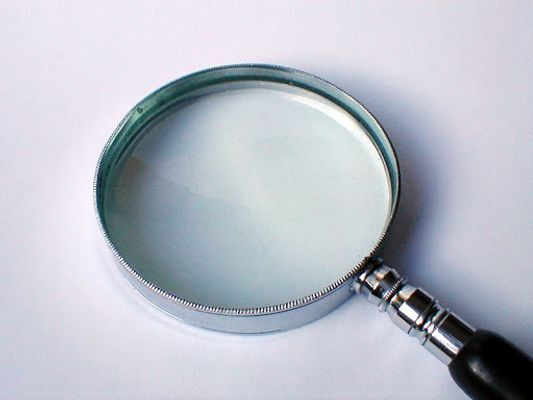2.13.2
Chapter 13: Key Themes
Key Themes in Chapter 13
Key Themes in Chapter 13
We hear events from Briony's perspective. The chronology of events is manipulated in Chapter 13.


Briony's narrative perspective
Briony's narrative perspective
- Crucially, Chapter 13 is seen from Briony’s perspective as we move towards her discovery of Lola and the “figure”.


Time shift to the crime
Time shift to the crime
- This chapter sees several disruptions to the chronological sequence of events.
- The chapter begins with a shift forward in time with the tantalising opening, “Within the half-hour Briony would commit her crime” (p.156), which immediately creates suspense.
- The chapter then goes back in time to recount the details of Briony’s search and discovery.


Time after the discovery
Time after the discovery
- Chronological time continues to be manipulated throughout the chapter.
- After Briony’s discovery of Lola and their piecing together of the crime, there is another shift forward in time to “the weeks and months to come” (p.167) where Briony would stick to her version of the events she had witnessed.


Explanation or justification?
Explanation or justification?
- We have to remember that it is an older Briony who is narrating this chapter and that she may be manipulating our response towards her “crime” by such a lengthy explanation (or justification?) for her actions after her discovery of Lola.
- We return to the ‘present’ when Leon and Cecilia find Briony and Lola.
Key Themes in Chapter 13
Key Themes in Chapter 13
In Chapter 13, Briony narrates events in the style of a fiction writer.


Briony's fictional account
Briony's fictional account
- Briony responds to events in this chapter as she imagines a writer of fiction must.
- She is almost exhilarated by the thought that “fairy stories were behind her” and that she has been given privileged access to a new and thrilling world “beyond the nursery”: “…in the space of a few hours she had witnessed mysteries, seen an unspeakable word, interrupted brutal behaviour…” (p160).


Robbie as a "villain"
Robbie as a "villain"
- Briony has learned that “villains were not announced with hisses… they did not come cloaked in black, with ugly expressions…” (p158).
- Robbie is now, in Briony’s eyes, a “maniac” or “brute”.


Briony's assumption about Robbie
Briony's assumption about Robbie
- Briony’s judgement that she has seen Robbie steal off after assaulting Lola is described as being an artistic decision which conveniently fits the story she is piecing together in her imagination: “She had no doubt. She could describe him… Everything connected. It was her own discovery. It was her story…” (p164-6).
- Briony convinces herself that Robbie is the assailant because this makes sense to her as a story: “The truth was in the symmetry… The truth instructed her eyes” (p169).
Key Themes in Chapter 13
Key Themes in Chapter 13
Chapter 13 focuses on the nature of Briony's "crime".


How much is Briony to blame?
How much is Briony to blame?
- The chapter begins with a reference to Briony’s “crime” and the narrative invites us to judge the extent to which Briony is culpable for falsely accusing Robbie of the sexual assault on Lola. Briony is only 13-years-old and in an excitable state of mind after all of the events that day.


Naming Robbie as assailant
Naming Robbie as assailant
- However, the narrative makes it clear that Briony leads Lola into naming Robbie as the assailant.
- Briony first uses his name in the form of a question (“It was Robbie, wasn’t it?”) before the question soon becomes an assertion, or as the narrative describes it, a “statement of fact… “It was Robbie”” (p.166).
- Briony seems to be applying pressure on Lola to accuse Robbie who she has already decided is the right villain for this story.


Briony's sinister tone
Briony's sinister tone
- When Lola admits to some uncertainty and that she couldn’t tell “for sure”, Briony responds with a blunt declaration which seems to almost verge on a threat: “Well I can. And I will” (p167).
- There is also something sinister in the statement that “Briony was there to help her at every stage” (p168) as if Briony has become something of a suffocating presence.


Defence for Briony's behaviour
Defence for Briony's behaviour
- The narrative offers further mitigation (a defence) for Briony’s behaviour e.g. her feeling like a “bride-to-be” as the new centre of attention and the fact that she is “anxious to please” the adults investigating the assault.


Briony's regret
Briony's regret
- We also learn of Briony’s regret at her decision: “She would never be able to console herself…” (p170).
- All of this may make us react more sympathetically to Briony but we must remember that, as the older Briony has narrated this chapter, she may be trying to manipulate her readers into judging her younger self more kindly.
1Introduction to Atonement
1.1Introduction & Background to Atonement
1.2Focus of Your Exam: Crime Texts
2Chapter Summaries & Analysis: Part One
2.6Chapter 6
2.10Chapter 10
2.11Chapter 11
2.12Chapter 12
2.13Chapter 13
2.14Chapter 14
3Chapter Summaries & Analysis: Part Two
3.1Pages 191-201: To the Farmhouse
3.2Pages 202-213: The Night in the Barn
3.3Pages 214-226: The Attack
3.4Pages 226-234: Robbie's Reflections
3.5Pages 234-246: To the Bridge over the Canal
3.6Pages 246-254: Arrival at Dunkirk
3.7Pages 254-265: To the Cellar
4Chapter Summaries & Analysis: Part Three
4.1Pages 269-277: London, 1940
4.2Pages 277-286: Briony as Writer
4.3Pages 287-315: Victims of War
4.4Pages 315-327: Lola & Paul Marshall’s Wedding
4.5Pages 328-349: The Visit
5Chapter Summaries & Analysis: Part Four
5.1Epilogue: London, 1999 - Pages 353-371
6Key Character Profiles
6.1Briony Tallis
6.2Robbie Turner
6.3Cecilia Tallis
6.5Paul Marshall
6.6Emily Tallis
7Key Themes
7.1Introduction to Crime Texts
7.2Crimes in Atonement
7.3Criminals in Atonement
7.4Victims in Atonement
7.5Detection in Atonement
7.6Settings in Atonement
7.7Guilt & Punishment in Atonement
8Writing Techniques
9Context
9.1Historical Context
9.2Social Context
9.3Literary Context
10Critical Debates
10.1Marxist Literary Criticism
Jump to other topics
1Introduction to Atonement
1.1Introduction & Background to Atonement
1.2Focus of Your Exam: Crime Texts
2Chapter Summaries & Analysis: Part One
2.6Chapter 6
2.10Chapter 10
2.11Chapter 11
2.12Chapter 12
2.13Chapter 13
2.14Chapter 14
3Chapter Summaries & Analysis: Part Two
3.1Pages 191-201: To the Farmhouse
3.2Pages 202-213: The Night in the Barn
3.3Pages 214-226: The Attack
3.4Pages 226-234: Robbie's Reflections
3.5Pages 234-246: To the Bridge over the Canal
3.6Pages 246-254: Arrival at Dunkirk
3.7Pages 254-265: To the Cellar
4Chapter Summaries & Analysis: Part Three
4.1Pages 269-277: London, 1940
4.2Pages 277-286: Briony as Writer
4.3Pages 287-315: Victims of War
4.4Pages 315-327: Lola & Paul Marshall’s Wedding
4.5Pages 328-349: The Visit
5Chapter Summaries & Analysis: Part Four
5.1Epilogue: London, 1999 - Pages 353-371
6Key Character Profiles
6.1Briony Tallis
6.2Robbie Turner
6.3Cecilia Tallis
6.5Paul Marshall
6.6Emily Tallis
7Key Themes
7.1Introduction to Crime Texts
7.2Crimes in Atonement
7.3Criminals in Atonement
7.4Victims in Atonement
7.5Detection in Atonement
7.6Settings in Atonement
7.7Guilt & Punishment in Atonement
8Writing Techniques
9Context
9.1Historical Context
9.2Social Context
9.3Literary Context
10Critical Debates
10.1Marxist Literary Criticism
Unlock your full potential with Seneca Premium
Unlimited access to 10,000+ open-ended exam questions
Mini-mock exams based on your study history
Unlock 800+ premium courses & e-books